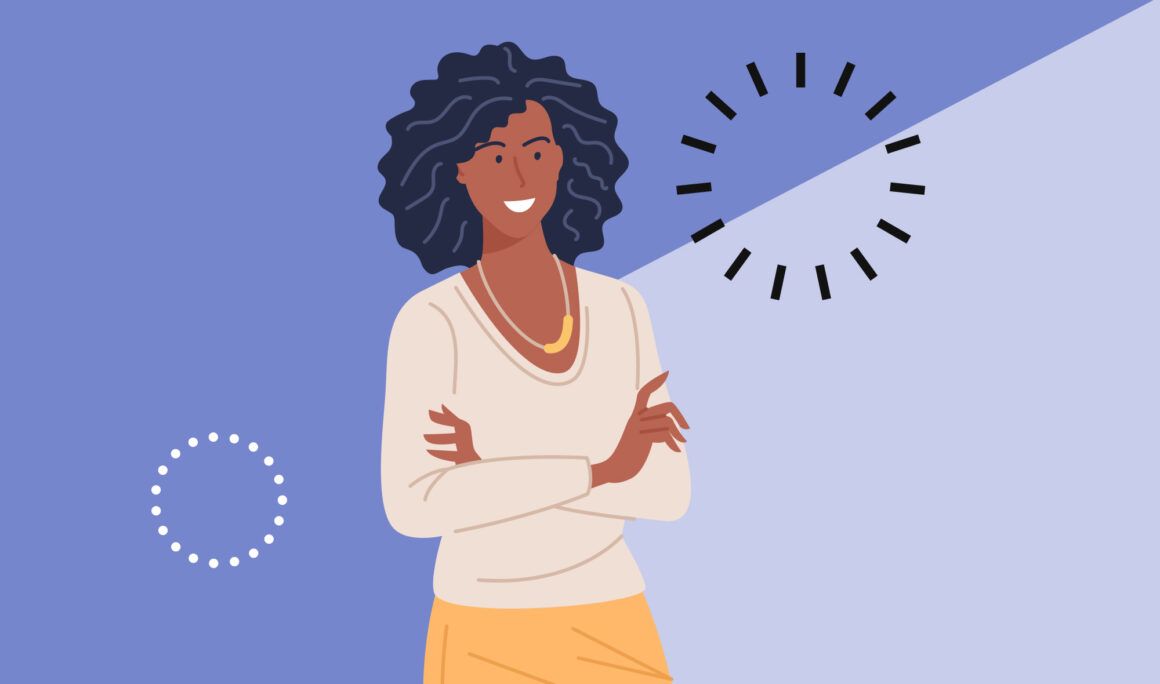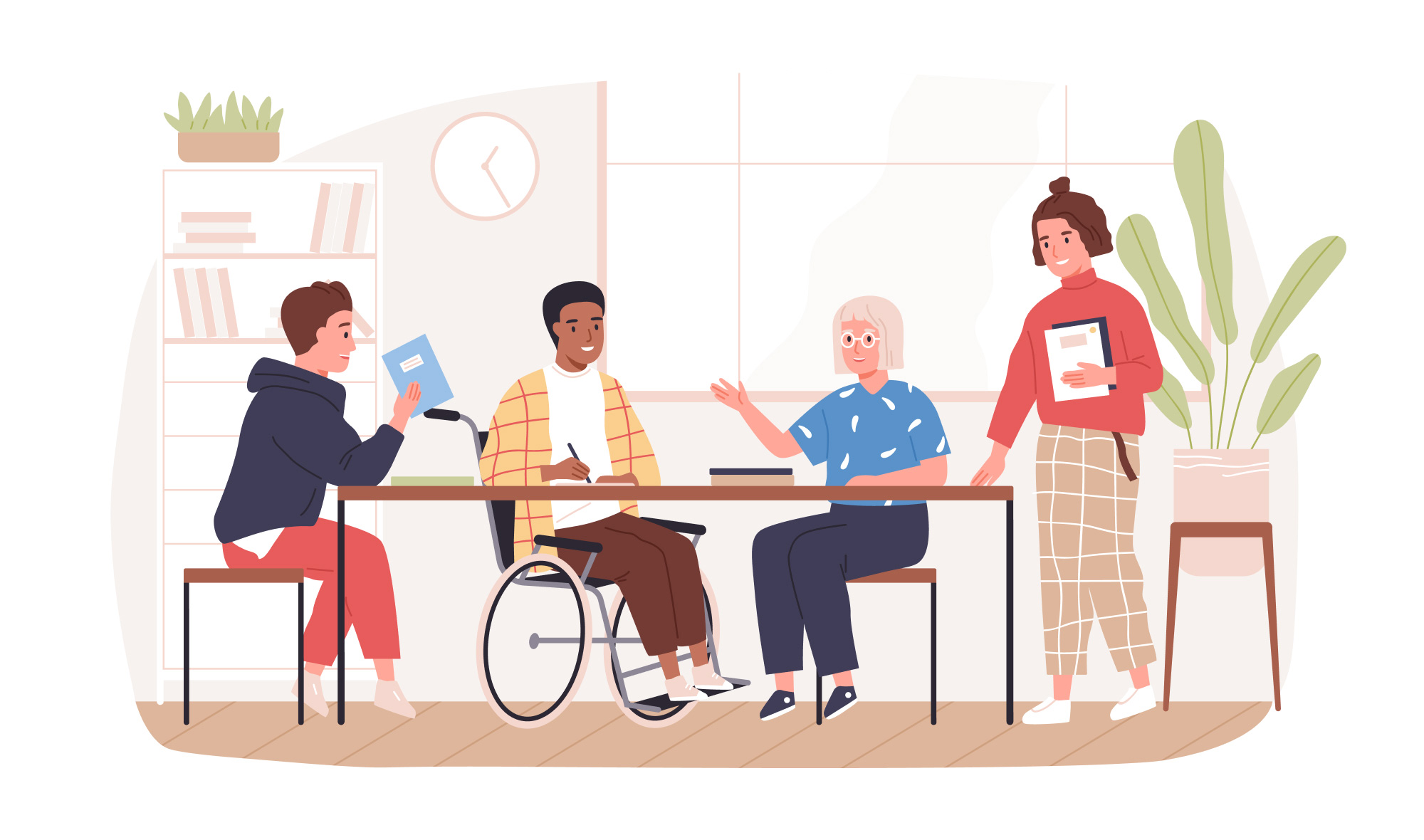
Have you ever noticed how much a person can express through his or her body language? It's not just about the words that come out of your mouth, but also the way you stand, the expressions on your face, and the gestures you use. This is called kinesics, and it's the study of body language.
In this blog post, we'll explore how body movements convey meaning, the different kinesic cues that we use to communicate, the role of culture in kinesics communication, and some tips for using kinesics effectively in your daily interactions.
Join our Newsletter
Transform your career with our personal growth insights. Get one valuable tip right in your inbox every Saturday morning.
Kinesics definition

The term "kinesics" was coined by Dr. Albert Mehrabian, a professor of psychology at the University of California, Los Angeles. Mehrabian was interested in studying the ways in which we use our bodies to communicate, both intentionally and unintentionally. In his research, he found that nonverbal movements such as facial expression, gestures, posture, and eye contact played a significant role in how we interact with one another.
In order to describe this aspect of communication, Mehrabian coined the term "kinesics," which comes from the Greek word "kinesis," meaning motion or movement. Thus, kinesics refers to the study of how we use our bodies to communicate.
What are kinesic cues?
Kinesic cues are the nonverbal messages that we use to communicate through our bodies. Examples of these movements include facial expression, gestures, posture, and eye contact. They are an important part of communication because they can convey a wide range of emotions and intentions, and they can often convey more information than words alone.
For example, a smile can convey happiness, while a frown can display sadness. A person's posture can demonstrate confidence or insecurity. Eye contact can convey interest, while avoiding eye contact can convey disinterest or discomfort. These cues can help us to understand how a person is feeling and can help us to respond appropriately.
Kinesic cues are also important because they can help to reinforce or contradict the words that we're saying. For example, if a person is saying they're happy but their facial expression is sad, it might be difficult to believe them. On the other hand, if a person is saying they're sad but their body language is positive, it might be easier to believe that they're trying to stay positive despite their sadness.
Overall, kinesic cues play a significant role in communication and are an important aspect of how we interact with one another. Understanding and being aware of the following cues can help us to communicate more effectively and to build stronger relationships with others.
Facial expressions
Facial expressions are an important part of kinesic communication, as they can convey a wide range of emotions. Some common facial expressions that are used in kinesic communication include:
- Smiling: A smile can convey happiness, friendliness, and positive emotions.
- Frowning: A frown can convey sadness, disapproval, or negative emotions.
- Laughing: Laughing can convey happiness, enjoyment, or a sense of humor.
- Crying: Crying can convey sadness, pain, or distress.
- Scowling: A scowl can convey anger, frustration, or disapproval.
- Winking: Winking can convey playfulness, flirtation, sexual attraction, or a sense of humor.
- Raising eyebrows: Raising eyebrows can convey surprise, skepticism, or confusion.
- Furrowing brows: A furrowed brow can convey concentration, frustration, or anger.
Facial expressions are a universal form of communication and are often used in conjunction with other kinesic cues, such as gestures and body posture, to convey information and meaning in social situations. Understanding and being aware of these facial expressions can help us to communicate more effectively and to read the emotions of others more accurately.
Gestures
Gestures play a crucial role in kinesic communication, including nonverbal and body language. Generally, they are used to reinforce verbal messages or to substitute words when they cannot be expressed. Gestures can also be used alone to communicate an entire message without the need for words.
There are two general types of gestures which are commonly used in communication: illustrative gestures, which are used to show us what the speaker is talking about, and affective gestures, which convey the speaker's emotional state.
Illustrative gestures are intended to reinforce the meaning of our words and can make our communication more effective. Examples can include pointing, using hand motions or props, or miming.
Affective gestures often involve movements of the hands or face that express a range of emotions such as sadness, anger, or happiness. They can help to convey our mood or emotions even when we cannot find the words to express them, and also help others understand us better.
Regardless of whether they are illustrative or affective in nature, body movements play an important role in nonverbal communication, and should be understood and used appropriately to enhance our ability to communicate effectively with others
Posture and body movement
The way we stand or sit can convey a lot about how we're feeling. For example, standing with your arms crossed might convey that you're feeling defensive or closed off, while leaning forward and making eye contact might show that you're interested and engaged. Additionally, movement like slouching could demostrate a lack of confidence, while standing with your hands on your hips gives off the appearance of self assuredness.
This is why it's important to be aware of your own physical stance and to pay attention to the posture of others. Without speaking actual words, posture can often reveal a person's emotions or intentions, and understanding these cues can help us to communicate more effectively and to build stronger bonds with friends and family members.
Join our Newsletter
Transform your career with our personal growth insights. Get one valuable tip right in your inbox every Saturday morning.
Eye contact
Research has shown that eye contact is the fastest way a person can communicate nonverbally, which can influence the way that we perceive others and the way that they perceive us.
One study found that people who make strong, sustained eye contact are perceived as more confident, trustworthy, and likable. On the other hand, people who avoid eye contact are often perceived as lacking emotion, untrustworthy or uncomfortable.
Other nonverbal studies found that people who make eye contact are more likely to be remembered and that eye contact can increase the effectiveness of communication. This is because eye contact helps to establish a connection between the speaker and the listener and can help to convey interest and attentiveness.
Overall, research suggests that eye contact is an important aspect of communication and can have a significant impact on how we perceive and interact with others. Understanding and being aware of the role of eye contact in kinesic communication can help us to communicate more effectively and to build stronger relationships with others.
The role of culture in kinesics communication

Kinesics communication can vary greatly across different cultures. What might be a friendly gesture in one culture could be seen as rude or inappropriate in another. For example, in some cultures, it's common to make eye contact when speaking to a person as a sign of respect and attentiveness, while in other cultures, avoiding eye contact can be seen as a sign of respect.
Many different cultures have their own unique gestures and body language cues. For example, in many Asian countries such as China and Japan, people frequently use a "nodding" head gesture to indicate agreement or acceptance, whereas in other cultures the same gesture could be interpreted as a sign of disagreement or disapproval. Similarly, in many African cultures, the head tilt is considered a sign of respect and deference, whereas in Western cultures the same gesture may be interpret the meaning as somewhat submissive.
It's important to be aware of these cultural differences and other factors in nonverbal communication and to be sensitive to them in order to avoid misunderstandings. It's also important to be open to learning about different cultural norms and to be willing to adapt your own nonverbal communication accordingly in a new social space.
Tips for effective kinesics communication
Are you struggling to communicate effectively with your co-workers, clients, or another person in your life? You're not alone, because effective kinesic behavior isn't easy to master. Luckily, there are simple ways you can make sure that your body language and facial expressions are working in harmony with the emotion of your message:
Here are some tips for using kinesics effectively in your communication:
Paying attention to your own nonverbal cues
Paying attention to your own nonverbal signals can be beneficial in a variety of situations, including personal relationships, professional interactions, and public speaking.
One reason to pay attention to your own kinesics communication is to ensure that you are accurately expressing your thoughts and emotions. For example, if you are feeling happy but your body language is closed off or tense, it may be confusing or misleading to others. By paying attention to your kinesic movements, you can determine if your body language is congruent with your speech and intentions. This can help you build stronger, more authentic relationships and create a sense of trust and openness with others.
Another reason to pay attention to your own kinesic behavior is to become more self-aware. By noticing and interpreting your own body language, you can gain insights into your own thoughts and emotion. This can help you understand yourself better and make more conscious choices about how you present yourself to others.
There are several ways to pay attention to your own nonverbal signals. Let's dive into a few examples:
- Practice mindfulness: Being present and aware of your own thoughts and actions can help you become more attuned to your body language.
- Seek feedback: Ask trusted friends or colleagues for honest feedback on the verbal message that your nonverbal communication sends. This can help you identify patterns or habits that you may not be aware of.
- Record yourself: Video yourself in various situations and pay attention to your body language. This can help you see how you present yourself to others and identify areas for improvement.
- Practice self-reflection: Take time to reflect on your thoughts and feelings in different situations and how they may be reflected in your body language.
By paying attention to your own cues, you can improve your nonverbal communication skills and become more self-aware. This can help you determine how to convey your intentions more effectively and navigate social and professional situations with greater confidence.
Reading and interpreting the nonverbal cues of others
On the flip side, when you focus your attention to nonverbal communication of others, you can gain insight into a person's thoughts and emotions and better understand their intentions. Here are some examples of reading and interpreting the non verbal cues of others:
- Pay attention to body language: Look for cues such as posture, facial expressions, and gestures. For example, crossed arms may indicate a closed-off or defensive stance, while leaning in and maintaining eye contact may indicate interest or engagement.
- Notice changes in behavior: Pay attention to changes in a person's body language, speech, or behavior, as these may indicate a shift in their thoughts or emotions.
- Look for clusters of cues: Nonverbal communication is often more meaningful when it occurs in clusters, rather than in isolation. For example, combining body movements like crossed arms and avoiding eye contact may indicate discomfort or disinterest.
- Consider the context: Non verbal cues should be interpreted in the context of the situation. For example, fidgeting or avoiding eye contact may indicate discomfort in a social situation, but may be completely normal in a more formal setting.
- Be aware of cultural differences: Nonverbal signals can vary significantly across cultures, so it is important to consider cultural differences when interpreting them.
However, it is important to remember that body movement are not always reliable indicators of a person's thoughts or intentions, and should be interpreted with caution. Additionally, it is important to consider the non verbal cues of both people in a conversation or interaction, as they may be sending conflicting messages.
With practice and experience, however, you can learn how to read and interpret the non verbal cues of others to improve your conversation skills and build stronger connections.
Using nonverbal communication to enhance verbal communication

Nonverbal communication is a powerful tool used to complement verbal communication. It can help add clarity, emphasize certain points, and express emotions when conversation alone cannot. Here are some examples to keep in mind when attempting to use nonverbal communication effectively:
Make sure your body language is consistent with your message
If you're trying to convey enthusiasm, for example, make sure your body language reflects this. Use hand gestures that match the energy of what you're saying, and keep a relaxed yet upright form to convey interest and attentiveness. Be mindful of your use of space as well; a person might interpret someone being in their "personal space" as rude or overbearing.
Pay attention to facial expressions and eye contact
Facial expressions are an important element of non verbal communication, so be sure to use them as needed. For example, if you're trying to convince a person that something is true or important, try making eye contact and using an earnest expression to help convey your message.
Use tone of voice effectively
Tone can be used in a number of ways to enhance nonverbal messages. For example, if you want to show empathy or understanding, use a gentle or soothing tone of voice. Similarly, if you want to show confidence and authority, try using firm or direct vocal qualities.
Be aware that certain nonverbal cues can have multiple meanings
In some cases, the meaning of a nonverbal cue may be unclear based on its context. For example, if a person crosses their arms, it may be interpreted as being defensive or closed off, but it can also simply be a sign of comfort or relaxation. As such, it's important to pay close attention to the cues you're sending and how others are responding in order to effectively use nonverbal communication.
By focusing on these key elements of non verbal communication, you can improve your ability to effectively use this often-overlooked aspect of communication. Keep in mind that nonverbal cues are only one piece of the puzzle and should be used in conjunction with other forms of communication, such as tone, body language, and facial expressions. With a little practice and attention to detail, you'll be able to enhance your verbal communication skills in no time.
Conclusion
People communicate in countless ways, but kinesics, or the study of body language, is a fascinating and useful field that can help us better understand and connect with others. By paying attention to our own nonverbal signals and interpreting those of others, we can improve our relationships, convey our feelings more effectively, and navigate social and professional situations with greater confidence.
However, it is important to remember that body language is just one aspect of how people communicate and should be interpreted with caution. By being aware of the subtle cues and signals that our bodies unconsciously give off, we can gain a deeper understanding of ourselves and others and build stronger, more authentic connections with the people around us.
Looking for more information on kinesics or how to improve your communication skills? Consider checking out our life coaching blog, or reach out to one of our expert coaches to start a conversation about your personal emotional state and goals.
Join our Newsletter
Transform your career with our personal growth insights. Get one valuable tip right in your inbox every Saturday morning.
Read more about: Life Coaching
About Julian Lewis
Julian Lewis is a driven and accomplished professional with a passion for driving positive change in the business world. He is the co-founder and COO at Zella Life.
His own experience as a professional of color in a Fortune 500 company led him to discover the limitations for advancement that many professionals like himself face. Determined to reach his full potential, Julian became an established business coach and entrepreneur, committed to supporting others in their pursuit of personal and professional growth.
Today, Julian is a recognized corporate trainer, coach, and leader, known for his ability to leverage real-life experiences and evidence-based methodologies to affect positive change within individuals and organizations. As the leader of Zella Life's coaching division, he is dedicated to empowering individuals and businesses to achieve their full potential.